Complete Classical Piano Music
- p.1 (Aa - Al)
- p.2 (Al - At)
- p.3 (At - Ba)
- p.4 (Ba - Ba)
- p.5 (Ba - Ba)
- p.6 (Ba - Ba)
- p.7 (Ba - Ba)
- p.8 (Ba - Ba)
- p.9 (Ba - Ba)
- p.10 (Ba - Ba)
- p.11 (Ba - Be)
- p.12 (Be - Be)
- p.13 (Be - Be)
- p.14 (Be - Be)
- p.15 (Be - Be)
- p.16 (Be - Be)
- p.17 (Be - Be)
- p.18 (Be - Bo)
- p.19 (Bo - Br)
- p.20 (Br - Br)
- p.21 (Br - Bu)
- p.22 (Bu - Ch)
- p.23 (Ch - Ch)
- p.24 (Ch - Ch)
- p.25 (Ch - Ch)
- p.26 (Ch - Ch)
- p.27 (Ch - Cl)
- p.28 (Cl - Co)
- p.29 (Co - Cz)
- p.30 (Cz - Da)
- p.31 (Da - De)
- p.32 (De - De)
- p.33 (De - De)
- p.34 (De - Du)
- p.35 (Du - En)
- p.36 (En - Fo)
- p.37 (Fr - Ge)
- p.38 (Gi - Gr)
- p.39 (Gr - Gr)
- p.40 (Gr - Gu)
- p.41 (Gu - Ha)
- p.42 (Ha - Ha)
- p.43 (Ha - Ha)
- p.44 (Ha - He)
- p.45 (He - Hy)
- p.46 (Ia - Jo)
- p.47 (Jo - Ka)
- p.48 (Ka - Ko)
- p.49 (Ko - La)
- p.50 (La - Li)
- p.51 (Li - Li)
- p.52 (Li - Li)
- p.53 (Li - Ma)
- p.54 (Ma - Mc)
- p.55 (Mc - Me)
- p.56 (Me - Mo)
- p.57 (Mo - Mo)
- p.58 (Mo - Mo)
- p.59 (Mo - Mo)
- p.60 (Mo - Na)
- p.61 (Ne - Pa)
- p.62 (Pa - Pl)
- p.63 (Pl - Pr)
- p.64 (Pr - Ra)
- p.65 (Ra - Ra)
- p.66 (Ra - Ra)
- p.67 (Ra - Ri)
- p.68 (Ri - Ro)
- p.69 (Ro - Sa)
- p.70 (Sa - Sc)
- p.71 (Sc - Sc)
- p.72 (Sc - Sc)
- p.73 (Sc - Sc)
- p.74 (Sc - Sc)
- p.75 (Sc - Sc)
- p.76 (Sc - Sc)
- p.77 (Sc - Sh)
- p.78 (Sh - Sn)
- p.79 (Sn - St)
- p.80 (St - Sz)
- p.81 (Ta - Tc)
- p.82 (Tc - Tu)
- p.83 (Tu - Va)
- p.84 (Va - Va)
- p.85 (Va - Va)
- p.86 (Va - Va)
- p.87 (Va - Va)
- p.88 (Va - Va)
- p.89 (Va - Va)
- p.90 (Va - Va)
- p.91 (Va - Va)
- p.92 (Va - Va)
- p.93 (Va - Va)
- p.94 (Va - Va)
- p.95 (Va - Va)
- p.96 (Va - Va)
- p.97 (Va - Vi)
- p.98 (Vi - We)
- p.99 (We - Za)
- p.100 (Za - Zy)
- Next >
-
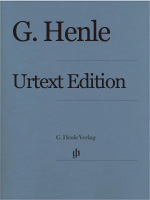
-
Bach, Johann Sebastian
Notebook for Anna Magdalena Bach (Heinemann/Theopold/Petrnz)
Baroque. Henle Urtext edition. Edited by Ernst-Gunter Heinemann. Fingering by Hans-Martin Theopold. Basso Continuo realization by Siegfried Petrenz.
Category: Piano Composer Folios
Item: 002018
Grade:
Price: $21.99
Availability: Ships in 6 to 9 Days - View Shopping Cart
-

-
Bach, Johann Sebastian
Notebook for Anna Magdalena Bach
Category: Piano Composer Folios
Item: 005041
Grade:
Price: $9.99
Availability: Usually Ships in 24 Hours - View Shopping Cart
-

-
Bach, Johann Sebastian
Notebook for Anna Magdalena Bach (Ludwig)
Category: Piano Composer Folios
Item: 002129
Grade:
Price: $20.95
Availability: Ships in 6 to 9 Days - View Shopping Cart
-

-
Bach, Johann Sebastian
Notebook for Anna Magdalena Bach, Selections from the (Snell)
During the course of five years, J.S. Bach filled two blank notebooks with easy keyboard pieces as a gift to his wife. These vital teaching pieces are now available in this accurately edited edition based on practical teaching experiences. The editorial suggestions emphasize musical ideas that will be successful when played by your students. Along with the famous Minuets, Marches, and Polonaises, this volume includes some less familiar selections from this wealth of easier keyboard literature. ...
Read More
Category: Piano Composer Folios
Item: 016364
Grade:
Price: $4.50
Availability: Ships in 10 to 14 Days - View Shopping Cart
-

-
Bach, Johann Sebastian
Notebook for Wilhelm Friedeman Bach
Category: Piano Composer Folios
Item: 019227
Grade:
Price: $17.95
Availability: Ships in 6 to 9 Days - View Shopping Cart
-
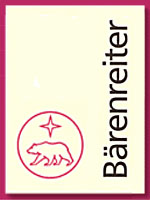
-
Bach, Johann Sebastian
Notebook for Wilhelm Friedemann Bach [urtext]
Category: Piano Composer Folios
Item: 036376
Grade:
Price: $25.00
Availability: Ships in 10 to 14 Days - View Shopping Cart
-
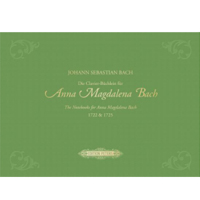
-
Bach, Johann Sebastian
Notebooks for Anna Magdalena Bach [premium hardbound edition]
Baroque. In 1721 a 20-year-old soprano employed at the princely court in Kthen married the court's Kapellmeister, set to become the greatest composer of the age. As his second wife she married into a young family with four children, and a busy householdfilled with music. The music book that Johann Sebastian Bach presented to his new wife Anna Magdalena in 1722, and replaced more lavishly in 1725, treats us to a tantalizing glimpse inside this unique family, allowing us to sit beside Bach as a co...
Read More
Category: Piano Composer Folios
Item: 131490
Grade:
Price: $90.00
Availability: Usually Ships in 24 Hours - View Shopping Cart
-
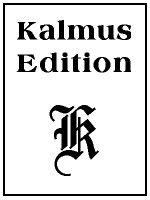
-
Bach, Johann Sebastian
Organ Preludes & Fugues (6) (Liszt)
Category: Piano Composer Folios
Item: 035465
Grade:
Price: $9.95
Availability: Ships in 6 to 9 Days - View Shopping Cart
-
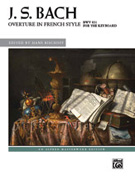
-
Bach, Johann Sebastian
Overture in French Style, BWV.831 (Bischoff)
Hans Bischoff (1852--1889) was a German concert pianist and well-regarded music editor, who continues to be respected for his thorough research, attention to detail, and careful consideration of source materials. This newly engraved edition of the Overture in French Style, BWV 831 is based on Bischoff's analysis of first editions and manuscripts in the Berlin State Library. Bischoff's footnotes and prefatory commentary have been preserved, as well as his interpretive suggestions for performance. ...
Read More
Category: Piano Solos
Item: 104537
Grade:
Price: $8.99
Availability: Usually Ships in 24 Hours - View Shopping Cart
-

-
Bach, Johann Sebastian
Oxford Classics (Rosen)
Category: Piano Composer Folios
Item: 001365
Grade:
Price: $7.50
Availability: Ships in 10 to 15 Days - View Shopping Cart
-

-
Bach, Johann Sebastian
Partita No 1 in Bb, BWV.825 (Scheideler)
Bach's Six Partitas form what is presumably the most famous and challenging collection of suites in music history. Bach was aware of the weightiness of his cycle as he initially had these multi-movement partitas, composed in Leipzig between 1726 and 1730, published in individual editions. This culminated in their publication in an anthology that proudly sports the opus number "1" in 1731. Their diversity of forms knows no bounds and the musical texture is infused with the most ingenious counterpo...
Read More
Category: Piano Solos
Item: 135592
Grade: Advanced
Price: $8.95
Availability: Usually Ships in 24 Hours - View Shopping Cart
-

-
Bach, Johann Sebastian
Partita No 1 in Bb, BWV.825 (Scheideler/Youn)
Bach's Six Partitas form what is presumably the most famous and challenging collection of suites in music history. Their diversity of forms knows no bounds and the musical texture is infused with the most ingenious counterpoint, but at the same time performers will not miss out on the enjoyment of virtuosic playing in any way. G. Henle Publishers presents this magnum opus in a revised Urtext edition that consults the original editions as well as autograph sources while also extensively documentin...
Read More
Category: Piano Solos
Item: 135860
Grade: Advanced
Price: $8.95
Availability: Usually Ships in 24 Hours - View Shopping Cart
-

-
Bach, Johann Sebastian
Partita No 2 in Cm, BWV.826 (Scheideler)
Bach's Six Partitas form what is presumably the most famous and challenging collection of suites in music history. Their diversity of forms knows no bounds and the musical texture is infused with the most ingenious counterpoint, but at the same time performers will not miss out on the enjoyment of virtuosic playing in any way. G. Henle Publishers presents this magnum opus in a revised Urtext edition that consults the original editions as well as autograph sources while also extensively documentin...
Read More
Category: Piano Solos
Item: 135855
Grade: Advanced
Price: $8.95
Availability: Usually Ships in 24 Hours - View Shopping Cart
-

-
Bach, Johann Sebastian
Partita No 2 in Cm, BWV.826 (Scheideler)
Bach's Six Partitas form what is presumably the most famous and challenging collection of suites in music history. Bach was aware of the weightiness of his cycle as he initially had these multi-movement partitas, composed in Leipzig between 1726 and 1730, published in individual editions. This culminated in their publication in an anthology that proudly sports the opus number "1" in 1731. Their diversity of forms knows no bounds and the musical texture is infused with the most ingenious counterpo...
Read More
Category: Piano Solos
Item: 135590
Grade: Advanced
Price: $8.95
Availability: Usually Ships in 24 Hours - View Shopping Cart
-

-
Bach, Johann Sebastian
Partita No 3 in Am, BWV 827 (Scheideler/Youn)
Bach's Six Partitas form what is presumably the most famous and challenging collection of suites in music history. Their diversity of forms knows no bounds and the musical texture is infused with the most ingenious counterpoint, but at the same time performers will not miss out on the enjoyment of virtuosic playing in any way. G. Henle Publishers presents this magnum opus in a revised Urtext edition that consults the original editions as well as autograph sources while also extensively documentin...
Read More
Category: Piano Solos
Item: 135861
Grade: Advanced
Price: $8.95
Availability: Usually Ships in 24 Hours - View Shopping Cart
-

-
Bach, Johann Sebastian
Partita No 3 in Am, BWV.827 (Scheideler)
Bach's Six Partitas form what is presumably the most famous and challenging collection of suites in music history. Bach was aware of the weightiness of his cycle as he initially had these multi-movement partitas, composed in Leipzig between 1726 and 1730, published in individual editions. This culminated in their publication in an anthology that proudly sports the opus number "1" in 1731. Their diversity of forms knows no bounds and the musical texture is infused with the most ingenious counterpo...
Read More
Category: Piano Solos
Item: 135591
Grade: Advanced
Price: $8.95
Availability: Usually Ships in 24 Hours - View Shopping Cart
-

-
Bach, Johann Sebastian
Partita No 5 in G (Prout)
Category: Piano Solos
Item: 011688
Grade:
Price: $3.50
Availability: Ships in 6 to 9 Days - View Shopping Cart
-

-
Bach, Johann Sebastian
Partitas & French Suite
Category: Piano Solos
Item: 025198
Grade:
Price: $10.95
Availability: Ships in 6 to 9 Days - View Shopping Cart
-

-
Bach, Johann Sebastian
Partitas (6), BWV.825-830 (Steglich/Theopold) [hard cover]
Hardcover. G. Henle URTEXT edition. Edited by Rudolph Steglich. Fingering by Hans-Martin Theopold.
Category: Piano Composer Folios
Item: 018494
Grade:
Price: $43.95
Availability: Ships in 6 to 9 Days - View Shopping Cart
-
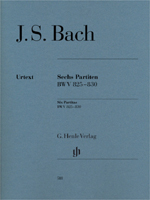
-
Bach, Johann Sebastian
Partitas (6), BWV.825-830 (Scheideler/Youn)
Bach's Six Partitas form what is presumably the most famous and challenging collection of suites in music history. Bach was aware of the weightiness of his cycle as he initially had these multi-movement partitas, composed in Leipzig between 1726 and 1730, published in individual editions. This culminated in their publication in an anthology that proudly sports the opus number "1" in 1731. Their diversity of forms knows no bounds and the musical texture is infused with the most ingenious counterpo...
Read More
Category: Piano Composer Folios
Item: 132072
Grade:
Price: $29.95
Availability: Usually Ships in 24 Hours - View Shopping Cart
-

-
Bach, Johann Sebastian
Partitas (6), BWV.825-830 (Engler)
Replaces former two volume edition. Also has better page turns than previous edition.
Category: Piano Composer Folios
Item: 055163
Grade:
Price: $25.95
Availability: Ships in 6 to 9 Days - View Shopping Cart
-

-
Bach, Johann Sebastian
Partitas (6), BWV.825-830 (Jones) [without fingerings]
Category: Piano Composer Folios
Item: 074831
Grade:
Price: $29.95
Availability: Ships in 10 to 15 Days - View Shopping Cart
-
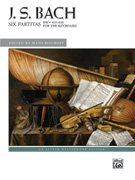
-
Bach, Johann Sebastian
Partitas (6), BWV.825-830 (Bischoff)
Category: Piano Composer Folios
Item: 104539
Grade:
Price: $17.99
Availability: Ships in 10 to 15 Days - View Shopping Cart
-

-
Bach, Johann Sebastian
Partitas (6), BWV.825-830 (Jones/Schirmer) [with fingerings]
Category: Piano Composer Folios
Item: 074840
Grade:
Price: $25.95
Availability: Ships in 10 to 15 Days - View Shopping Cart
-

-
Bach, Johann Sebastian
Partitas (6), BWV.825-830 [no fingering] (Scheideler)
Bach's Six Partitas form what is presumably the most famous and challenging collection of suites in music history. Bach was aware of the weightiness of his cycle as he initially had these multi-movement partitas, composed in Leipzig between 1726 and 1730, published in individual editions. This culminated in their publication in an anthology that proudly sports the opus number "1" in 1731. Their diversity of forms knows no bounds and the musical texture is infused with the most ingenious counterpo...
Read More
Category: Piano Composer Folios
Item: 134828
Grade:
Price: $29.95
Availability: Ships in 10 to 15 Days - View Shopping Cart
-
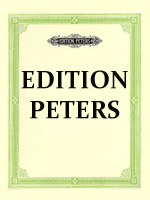
-
Bach, Johann Sebastian
Partitas (6), v.1 (Nrs 1-3), BWV.825-827 (Soldan)
Category: Piano Composer Folios
Item: 018071
Grade:
Price: $11.95
Availability: Ships in 10 to 14 Days - View Shopping Cart
-

-
Bach, Johann Sebastian
Partitas (6), v.1 (Nrs 1-3), BWV.825-827 (Engler)
Vienna (Wiener) Urtext Edition.
Category: Piano Composer Folios
Item: 020349
Grade:
Price: $25.95
Availability: Ships in 6 to 9 Days - View Shopping Cart
-

-
Bach, Johann Sebastian
Partitas (6), v.1 (Nrs 1-3), BWV.825-827 (Steglich/Theopold)
G. Henle URTEXT edition. Edited by Rudolph Steglich. Fingering by Han-Martin Theopold.
Category: Piano Composer Folios
Item: 003661
Grade:
Price: $18.95
Availability: Ships in 6 to 9 Days - View Shopping Cart
-

-
Bach, Johann Sebastian
Partitas (6), v.1 (Nrs 1-3), BWV.825-827 (Steglich) [no fingering]
G. Henle urtext edition. Edited by Rudolph Steglich. Edition with no fingering.
Category: Piano Composer Folios
Item: 074612
Grade:
Price: $17.95
Availability: Ships in 6 to 9 Days - View Shopping Cart
-

-
Bach, Johann Sebastian
Partitas (6), v.2 (Nrs 4-6), BWV.828-830 (Steglich) [no fingering]
G. Henle urtext edition. Edited by Rudolph Steglich. Edition with no fingering.
Category: Piano Composer Folios
Item: 074613
Grade:
Price: $17.95
Availability: Ships in 6 to 9 Days - View Shopping Cart
-

-
Bach, Johann Sebastian
Partitas (6), v.2 (Nrs 4-6), BWV.828-830 (Soldan)
Category: Piano Composer Folios
Item: 018072
Grade:
Price: $13.95
Availability: Ships in 10 to 14 Days - View Shopping Cart
-

-
Bach, Johann Sebastian
Partitas (6), v.2 (Nrs 4-6), BWV.828-830 (Steglich/Theopold)
G. Henle URTEXT edition. Edited by Rudolph Steglich. Fingering by Han-Martin Theopold.
Category: Piano Composer Folios
Item: 001349
Grade:
Price: $18.95
Availability: Ships in 6 to 9 Days - View Shopping Cart
-

-
Bach, Johann Sebastian
Pieces from the Anna Magdalena Notebook (4)
Category: Piano Composer Folios
Item: 001367
Grade:
Price: $1.95
Availability: Ships in 6 to 9 Days - View Shopping Cart
-

-
Bach, Johann Sebastian
Polonaises (12)
G. Henle URTEXT edition.
Category: Piano Composer Folios
Item: 019259
Grade:
Price: $11.95
Availability: Ships in 6 to 9 Days - View Shopping Cart
-
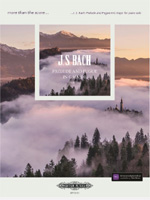
-
Bach, Johann Sebastian
Preluce & Fugue in C, BWV.846 (Grimwood) [more than the score...]
more than the score_ is a series of classic piano music, covering much of the essential repertoire from Bach through Mozart, Schubert, Mendelssohn, Chopin and Debussy, right up to John Cage. Each volume focuses on one piece, with written masterclasses and background information encouraging an exploration of the music - beyond the printed score. All titles in the this series include written masterclasses from one of our panel of internationally-renowned pianists including Joanna MacGregor, Roy Ho...
Read More
Category: Piano Solos
Item: 118650
Grade:
Price: $8.50
Availability: Ships in 10 to 15 Days - View Shopping Cart
-

-
Bach, Johann Sebastian
Prelude & Fugue in C, BWV.846
G. Henle URTEXT edition.
Category: Piano Solos
Item: 030230
Grade:
Price: $8.95
Availability: Ships in 6 to 9 Days - View Shopping Cart
-
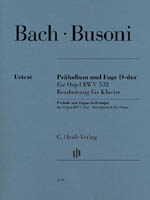
-
Bach, Johann Sebastian
Prelude & Fugue in D, BWV.532 (Busoni/Scheideler/Hamelin)
Aside from the violin Chaconne (HN 557) and the ten Chorale Preludes for organ (HN 1293), the Prelude and Fugue in D major ranks among the best-known piano transcriptions Busoni fashioned from J. S. Bach's works. Considerable evidence suggests that he viewed these three pieces as paradigmatic examples of his transcription technique. Busoni's explicit labelling of the Prelude and Fugue "for concert performance" in the title already serves as an indication of the heightened virtuosic requirements. ...
Read More
Category: Piano Solos
Item: 127088
Grade:
Price: $15.95
Availability: Ships in 10 to 15 Days - View Shopping Cart
-

-
Bach, Johann Sebastian
Prelude & Fugue No 12, from the Well Tempered Clavier, v.2
Category: Piano Solos
Item: 001373
Grade:
Price: $1.95
Availability: Ships in 6 to 9 Days - View Shopping Cart
-

-
Bach, Johann Sebastian
Prelude & Fugues Nrs 1-8, from the Well Tempered Clavier, v.1 (Bischoff)
Category: Piano Composer Folios
Item: 001987
Grade:
Price: $9.95
Availability: Ships in 6 to 9 Days - View Shopping Cart
-

-
Bach, Johann Sebastian
Prelude in C (Oesterle)
Category: Piano Solos
Item: 017599
Grade:
Price: $3.95
Availability: Ships in 6 to 9 Days - View Shopping Cart
-

-
Bach, Johann Sebastian
Prelude in C, from the Well Tempered Clavier, w/Audio (sample page)
(sample page)
Category: Piano Solos
Item: 032388
Grade:
Price: $7.99
Availability: Ships in 6 to 9 Days - View Shopping Cart
-

-
Bach, Johann Sebastian
Prussian Sonatas
Category: Piano Composer Folios
Item: 030400
Grade:
Price: $6.95
Availability: Ships in 6 to 9 Days - View Shopping Cart
-

-
Bach, Johann Sebastian
Selected Preludes & Fugues (Snell)
Category: Piano Composer Folios
Item: 046676
Grade:
Price: $5.95
Availability: Ships in 10 to 15 Days - View Shopping Cart
-

-
Bach, Johann Sebastian
Selected Works (Palmer)
Category: Piano Composer Folios
Item: 010916
Grade:
Price: $14.95
Availability: Ships in 6 to 9 Days - View Shopping Cart
-

-
Bach, Johann Sebastian
Selected Works [comb bound] (Palmer)
Category: Piano Composer Folios
Item: 024117
Grade:
Price: $15.95
Availability: Ships in 6 to 9 Days - View Shopping Cart
-
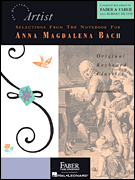
-
Bach, Johann Sebastian
Selections from Anna Magdalena Notebook (Faber & Faber) [Piano Adventures]
The perfect introduction to Baroque keyboard music. Contents include: March in D (Helm 1) (C.P.E Bach) March in G (Helm 1) (C.P.E Bach) Minuet in C Minor (BWV Anhang 121) (composer unknown) Minuet in D minor (BWV Anhang 132) (composer unknown) Minuetin G (Attr. Boehm) Minuet in G (BWV Anhang 114) (Pezold) Minuet in G (BWV Anhang 116) (composer unknown) Minuet in G Minor (BWV Anhang 115) (Pezold) Musette in D (BWV Anhang 126) (composer unknown) Polonaise in G minor (BWV Anhang 119) (compo...
Read More
Category: Piano Composer Folios
Item: 015916
Grade:
Price: $6.99
Availability: Usually Ships in 24 Hours - View Shopping Cart
-

-
Bach, Johann Sebastian
Selections from Anna Magdalena Notebook, w/Audio (Palmer)
This timeless collection contains selections attributed to J. S. Bach, his son C.P.E. Bach, and others. Generations of students have studied the volume's "Menuet in G Major," "Musette in D Major" and the "Prelude in C Major" from the first volume of The Well-Tempered Clavier. Dr. Palmer provides the texts to the instrumental settings of chorales and arias found in this work, as well as a brief biography of the Bach family. The Alfred Masterwork CD Editions conveniently combine each exceptional vo...
Read More
Category: Piano Composer Folios
Item: 054516
Grade:
Price: $10.99
Availability: Ships in 6 to 9 Days - View Shopping Cart
-
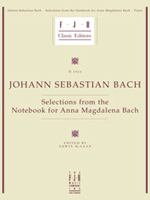
-
Bach, Johann Sebastian
Selections from the Notebook for Anna Magdalena Bach (McLean)
In 1725, J.S. Bach gave his second wife, Anna Magdalena, a "Notenbchlein"a collection of solo keyboard pieces and arias. Most of the keyboard pieces were composed by friends, colleagues, and his son, Carl Philipp Emanuel Bach. The easier keyboard works were probably used to instruct their children, while the arias would have been performed by Anna Magdalena, who was a singer. For this edition, Edwin McLean has chosen and expertly edited the most popular and easier keyboard pieces. Originally, th...
Read More
Category: Piano Solos
Item: 134755
Grade: Grade 3 - Early Intermediate
Price: $10.95
Availability: Ships in 10 to 15 Days - View Shopping Cart
-

-
Bach, Johann Sebastian
Sheep May Safely Graze, from Cantata 208 (Howe)
Category: Piano Solos
Item: 001394
Grade:
Price: $11.50
Availability: Usually Ships in 24 Hours - View Shopping Cart
-

-
Bach, Johann Sebastian
Sheep May Safely Graze, from Cantata 208 (Petri)
Category: Piano Solos
Item: 021048
Grade:
Price: $6.25
Availability: Ships in 6 to 9 Days - View Shopping Cart
- p.1 (Aa - Al)
- p.2 (Al - At)
- p.3 (At - Ba)
- p.4 (Ba - Ba)
- p.5 (Ba - Ba)
- p.6 (Ba - Ba)
- p.7 (Ba - Ba)
- p.8 (Ba - Ba)
- p.9 (Ba - Ba)
- p.10 (Ba - Ba)
- p.11 (Ba - Be)
- p.12 (Be - Be)
- p.13 (Be - Be)
- p.14 (Be - Be)
- p.15 (Be - Be)
- p.16 (Be - Be)
- p.17 (Be - Be)
- p.18 (Be - Bo)
- p.19 (Bo - Br)
- p.20 (Br - Br)
- p.21 (Br - Bu)
- p.22 (Bu - Ch)
- p.23 (Ch - Ch)
- p.24 (Ch - Ch)
- p.25 (Ch - Ch)
- p.26 (Ch - Ch)
- p.27 (Ch - Cl)
- p.28 (Cl - Co)
- p.29 (Co - Cz)
- p.30 (Cz - Da)
- p.31 (Da - De)
- p.32 (De - De)
- p.33 (De - De)
- p.34 (De - Du)
- p.35 (Du - En)
- p.36 (En - Fo)
- p.37 (Fr - Ge)
- p.38 (Gi - Gr)
- p.39 (Gr - Gr)
- p.40 (Gr - Gu)
- p.41 (Gu - Ha)
- p.42 (Ha - Ha)
- p.43 (Ha - Ha)
- p.44 (Ha - He)
- p.45 (He - Hy)
- p.46 (Ia - Jo)
- p.47 (Jo - Ka)
- p.48 (Ka - Ko)
- p.49 (Ko - La)
- p.50 (La - Li)
- p.51 (Li - Li)
- p.52 (Li - Li)
- p.53 (Li - Ma)
- p.54 (Ma - Mc)
- p.55 (Mc - Me)
- p.56 (Me - Mo)
- p.57 (Mo - Mo)
- p.58 (Mo - Mo)
- p.59 (Mo - Mo)
- p.60 (Mo - Na)
- p.61 (Ne - Pa)
- p.62 (Pa - Pl)
- p.63 (Pl - Pr)
- p.64 (Pr - Ra)
- p.65 (Ra - Ra)
- p.66 (Ra - Ra)
- p.67 (Ra - Ri)
- p.68 (Ri - Ro)
- p.69 (Ro - Sa)
- p.70 (Sa - Sc)
- p.71 (Sc - Sc)
- p.72 (Sc - Sc)
- p.73 (Sc - Sc)
- p.74 (Sc - Sc)
- p.75 (Sc - Sc)
- p.76 (Sc - Sc)
- p.77 (Sc - Sh)
- p.78 (Sh - Sn)
- p.79 (Sn - St)
- p.80 (St - Sz)
- p.81 (Ta - Tc)
- p.82 (Tc - Tu)
- p.83 (Tu - Va)
- p.84 (Va - Va)
- p.85 (Va - Va)
- p.86 (Va - Va)
- p.87 (Va - Va)
- p.88 (Va - Va)
- p.89 (Va - Va)
- p.90 (Va - Va)
- p.91 (Va - Va)
- p.92 (Va - Va)
- p.93 (Va - Va)
- p.94 (Va - Va)
- p.95 (Va - Va)
- p.96 (Va - Va)
- p.97 (Va - Vi)
- p.98 (Vi - We)
- p.99 (We - Za)
- p.100 (Za - Zy)
- Next >
More Options
- Use our Custom Order Page to special order items you can't find.
- Use our Catalog Order Page to order items from a printed catalog, or if you already know our catalog number for the item(s) you're interested in.
- And as always, feel free to E-mail us with your questions!
